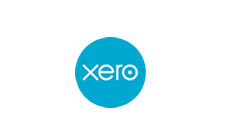Shrink the tax bill on your investment bonds
An investment bond you bought a while ago is about to mature and pay you a large lump sum. Your financial advisor says there will be a significant tax bill to pay on it. What steps can you take to reduce this?

Investment bonds
Working out the tax you’ll have to pay on gains made from an investment bond, known as a “chargeable event gain”, can be decidedly tricky. Special tax rules come into play when the bond matures or you cash it in earlier.
If you cash in only part of your bond (a partial surrender) it’s not taxable unless you receive more than 5% of your original investment per year. For example, if you bought a bond for £25,000 in April 2018 and took £6,000 from it in May 2022 (and nothing prior to that) only £1,000 is taxable (£6,000 - (£25,000 x 5% x 4 years)).
Cashing in
When you cash in your bond in full the investment company works out how much of what it pays you is a return of your capital and how much is a gain. It then sends you a “chargeable event certificate” showing the details. You’ll need this for your tax return. This is where the tax fun and games begin. To work out the tax on a chargeable event gain first calculate your tax bill on all your other income, then add on the gain and recalculate it. The difference is the tax on the gain.
Example. Tim, whose only income normally comes from the company he owns, invested £30,000 in a bond in June 2010. In October 2022 he encashed it in full for £105,000. The gain of £75,000 is added to Tim’s other income of £51,000 for 2022/23. Because Tim is a higher rate taxpayer the tax on the gain is whopping £30,000. However, the gain includes a basic rate tax credit of £15,000 (£75,000 x 20%) which reduces the tax bill on the gain to £15,000. But with a little planning Tim could slash the bill further, possibly to nothing.
Top slicing relief
Because gains on bonds accumulate until you encash them you’re taxed on multiple years’ income all in a single year. A special relief (top slicing relief (TSR)) can remove some of this unfairness. TSR works by comparing the amount of tax payable on the whole gain with that payable on a slice of it as if the income had been received each year since you bought the bond.
TSR only reduces your tax bill if the slice of the gain puts you in a lower tax band than if you were taxed on the whole gain. In our example, Tim wouldn’t get any TSR because his income of £51,000 made him a higher rate taxpayer even before adding on the bond gain. Whether the whole gain or just the slice of it, £6,250 (£75,000 / 12 years), was added to his income he remains in the higher rate (40%) tax bracket, and so no TSR.
As the owner manager of his own company Tim could easily reduce the income he takes from it so that for 2022/23 (ignoring the bond) it falls wholly into the basic rate band. By reducing his income sufficiently he could avoid all tax on the gain. He would need to reduce his income so that when the slice of the gain (£6,250) is added to the total it’swithin the basic rate band.
Even if Tim isn’t able to reduce his income, say, because he is a regular employee, he could still trigger TSR by paying pension premiums. These extend the basic tax rate band and so could take him out of the higher rate band.
Related Topics
-
Planning ahead for pension salary sacrifice changes
From 6 April 2029, both employers and employees will be required to pay Class 1 NI on pension contributions in excess of £2,000 made through a salary sacrifice arrangement. What can you do about it?
-
Can you claim input tax on costs linked to electric cars?
Your business intends to go green and buy new electric cars. Can you claim input tax on the purchase of the vehicles and their subsequent fuel costs? Additionally, what recent change has been announced by HMRC?
-
Dodging the 2027 IHT and pension changes
In a little over a year the inheritance tax (IHT) exemption for unused pension savings comes to an end. If you’re married or in a civil partnership, one simple step might save your estate thousands in IHT. What is it?






 This website uses both its own and third-party cookies to analyze our services and navigation on our website in order to improve its contents (analytical purposes: measure visits and sources of web traffic). The legal basis is the consent of the user, except in the case of basic cookies, which are essential to navigate this website.
This website uses both its own and third-party cookies to analyze our services and navigation on our website in order to improve its contents (analytical purposes: measure visits and sources of web traffic). The legal basis is the consent of the user, except in the case of basic cookies, which are essential to navigate this website.